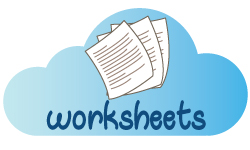What Is a Simile? | Definition & Examples
- English Lessons >
- Similes
Overview of Similes:
- Introduction to Similes
- What Is a Simile?
- Examples of Similes
- Components of a Simile
- Tenor and Vehicle
- Event and Comparator
- Understanding Similes
- Difference between Similes and Metaphors
- Similes in Literature
- Practice Writing Your Own Similes
- Three Stages in Writing a Simile
- When to Use Similes
- Similes - Quiz
Introduction to Similes
Are you tired of using words that hardly have anything beyond their literal meanings? Chances are you are, and you want to sound more fun and exciting using lots of powerful devices designed to make your speaking and writing a cut above the rest. The English language is blessed with a plethora of figures of speech, at the forefront of which is a simile. For students embarking on an exciting figure of speech journey, simile is one of the first few things that are sure to engage them a lot and cast on them a spell of charm.
What Is a Simile?
Who hasn't heard Wordsworth's "I wandered lonely as a cloud"? A simile is a figure of speech that finds an interesting similarity between two things and phrases it using words such as "like" or "as". At the heart of a simile is a desire to strike an instant connection with the listener or reader and drive home the point with twice the ease. We don't need to refer to poems or other literary forms for similes; we use them a lot in our everyday conversations.
Examples of Similes
On Christmas eve, Grandma was as busy as a bee.
Lara said the test was as tricky as a labyrinth.
When he moved to a new city, Kevin initially felt like a fish out of water.
The soldier was as brave as a lion.
The man was as funny as a monkey.
She slept like a log all night.
Components of a Simile
A simile has four key components. They are the topic or tenor, the vehicle, the event, and the comparator.
Tenor and Vehicle
The topic or tenor is the subject of comparison. The vehicle is the object of comparison.
Example:
Mark is as tall as a giraffe.
Mark is the tenor, and giraffe is the vehicle.
Event and Comparator
The event refers to the act or state. The comparator is the word that does the comparison: like or as.
Example:
Mark is as tall as a giraffe.
Here, is as tall is the state, and as is the comparator.
Understanding Similes
Similes are great tools that instantly generate fun and excite the reader with the vivid pictures they bring along. Students should, however, understand how the process of a simile works, so they are able to not only spot one instantly but also to stuff their speaking and writing with lots of this figure of speech.
Example:
On Christmas eve, Grandma was as busy as a bee.
The "as busy as a bee" simile is one that's popularly used by English speakers across the globe.
What we are doing here is comparing Grandma on Christmas eve to a bee. The reason? They both are busy. Bees don't have it easy and have to stay busy around the clock tending to the honey combs and fanning their wings to keep the nest cool. Similarly, Grandma on Christmas eve doesn't have it easy either. She has to see the Christmas lights, decorate the house, bake a special recipe, craft Christmas gifts, and more.
Difference between Similes and Metaphors
If you are metaphorically inclined, telling between similes and metaphors can cause you a little confusion. This is because a simile and metaphor sound a lot like each other. The key, though, is the word "simile" itself. While a simile says someone or something is like or similar to something, a metaphor goes a step ahead and says someone or something is another. In other words, a simile will always have one of the words: as and like. A metaphor, on the other hand, doesn't use these words.
Examples:
Life is like a play. (simile)
Life is a play. (metaphor)
Your hands are as cold as ice. (simile)
Your hands are ice. (metaphor)
You are as innocent as an angel. (simile)
You are an angel. (metaphor)
Similes in Literature
Literature has always been abounding in similes. Writers use them to elevate the visual impact of a text instead of their works. Below are a few examples of similes used in literature.
Examples:
"O my love is like the melody that's sweetly played in tune."
(A Red, Red Rose, by Robert Burns)
"Shall I compare thee to a summer’s day?
Thou art more lovely and more temperate."
(Sonnet 18, by William Shakespeare)
"She entered with ungainly struggle like some huge awkward chicken, torn, squawking, out of its coop."
(The Adventures of Three Gables, by Sir Arthur Conan Doyle)
Practice Writing Your Own Similes
Once students are familiar with similes, they should be encouraged to make their own similes. Obviously, they can't write fantastic similes overnight, but the idea is to help them cultivate an imaginative approach to the language in the form of similes.
Three Stages in Writing a Simile
First, have a clear picture of which aspect of something you wish to compare — its being beautiful, boring, delicious, huge, and so on. Secondly, think about something that has this aspect/quality in abundance. Finally, simply write the simile using as or like.
Example:
You want to describe the softness of a baby's skin. Think about something that is softer — velvet.
Write the simile using as.
The baby's skin is as soft as velvet.
When to Use Similes
Although similes are creative, descriptive, and entertaining expressions, they are not indiscriminately used everywhere. We can use similes in everyday conversations, speeches, novels, and poems. However, we don't use them where figurative language doesn't work. For example, take the below sentence from a user manual, which comes under technical writing.
To ensure that operating the device is as easy as a pie, update the software regularly. (incorrect)
To ensure an easy and hassle-free operation of the device, update the software regularly. (correct)
The first sentence contains a simile (as easy as a pie) and is not a good idea for the manual. The second sentence, however, is simple and free from similes or any literary devices. So, it's the better idea for the manual.
Take a Simile Quiz Now!

Hone your skills using our free printable Simile Worksheets.

